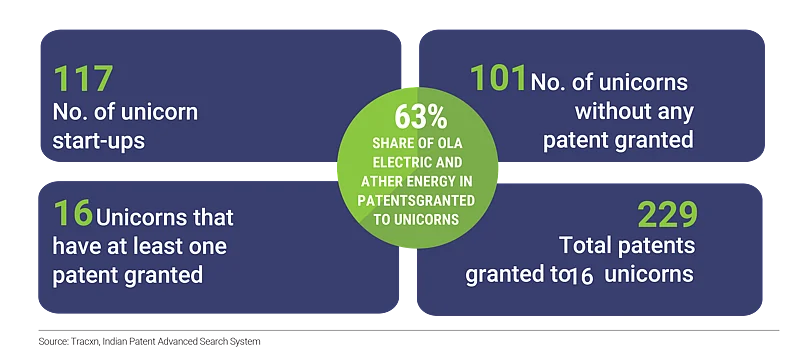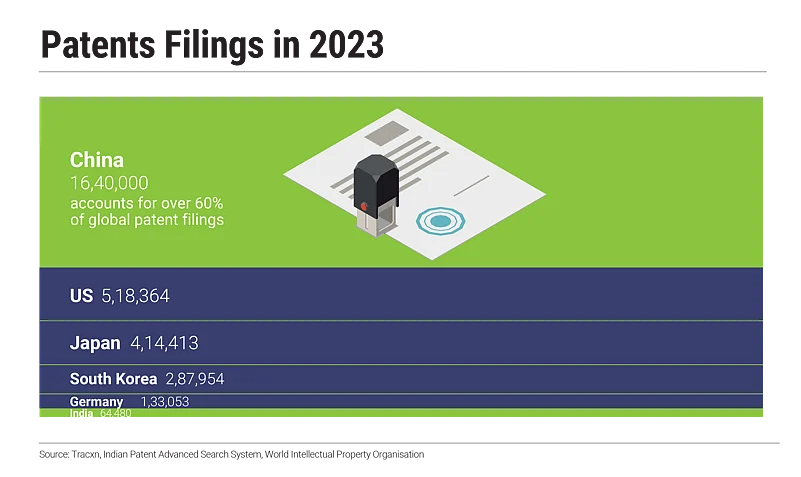India’s start-up boom has produced 117 unicorns, making it the world’s third-largest tech ecosystem. But beneath the hype lies a sobering reality—the majority hold no patents at all.
This lack of intellectual property protection undermines innovation and weakens India’s competitive advantage in global markets

The two EV start-ups, Ola Electric and Ather Energy together account for almost two-thirds of all patents held by Indian unicorns.
On the other end of the spectrum are 101 unicorns with no patents at all—including well-known names like Paytm, PhonePe, Swiggy and Zomato

When it comes to private unicorns, Flipkart holds the highest number of patents and is pursuing more across areas such as supply chain, warehousing and data science

Many unicorns have applied for far more patents than they’ve received, but applications are held up by India’s notoriously sluggish patent-review system

And while India lags far behind China and the US, in 2023, it ranked among the top 10 countries in patent applications, according to the World Intellectual Property Indicators report.
However, close to 78% of patents granted in India were to foreign applicants—a sign that foreign entities still overshadow domestic innovation

Research: Rakshit Kumar and Nabodita Ganguly | Graphics: Shriya Bhatia












 Just one email a week
Just one email a week